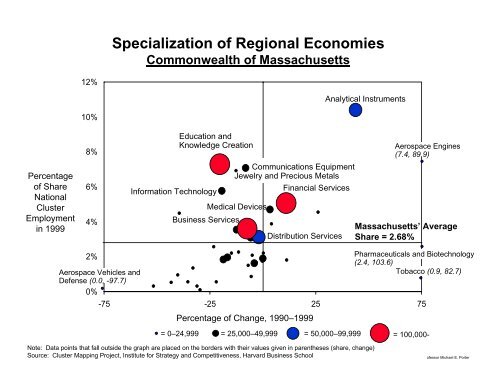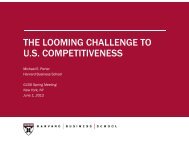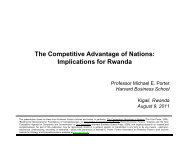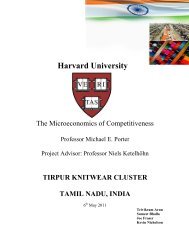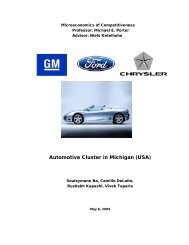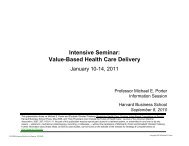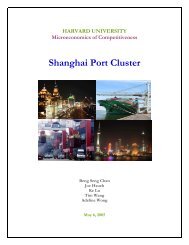Clusters and the Development of Competitive Advantage
Clusters and the Development of Competitive Advantage
Clusters and the Development of Competitive Advantage
You also want an ePaper? Increase the reach of your titles
YUMPU automatically turns print PDFs into web optimized ePapers that Google loves.
Specialization <strong>of</strong> Regional Economies<br />
Commonwealth <strong>of</strong> Massachusetts<br />
12%<br />
Analytical Instruments<br />
Percentage<br />
<strong>of</strong> Share<br />
National<br />
Cluster<br />
Employment<br />
in 1999<br />
10%<br />
8%<br />
6%<br />
4%<br />
Education <strong>and</strong><br />
Knowledge Creation<br />
Information Technology<br />
Business Services<br />
Communications Equipment<br />
Jewelry <strong>and</strong> Precious Metals<br />
Medical Devices<br />
Financial Services<br />
Distribution Services<br />
Aerospace Engines<br />
(7.4, 89.9)<br />
Massachusetts’ Average<br />
Share = 2.68%<br />
2%<br />
Pharmaceuticals <strong>and</strong> Biotechnology<br />
(2.4, 103.6)<br />
Aerospace Vehicles <strong>and</strong><br />
Tobacco (0.9, 82.7)<br />
Defense (0.0, -97.7)<br />
0%<br />
-75 -25 25 75<br />
Percentage <strong>of</strong> Change, 1990–1999<br />
= 0–24,999 = 25,000–49,999 = 50,000–99,999 = 100,000-<br />
Note: Data points that fall outside <strong>the</strong> graph are placed on <strong>the</strong> borders with <strong>the</strong>ir values given in paren<strong>the</strong>ses (share, change)<br />
Source: Cluster Mapping Project, Institute for Strategy <strong>and</strong> <strong>Competitive</strong>ness, Harvard Business School<br />
StartUp Jerusalem Cluster Theory 10-18-04 CK<br />
6<br />
Copyright © 2004 Pr<strong>of</strong>essor Michael E. Porter


